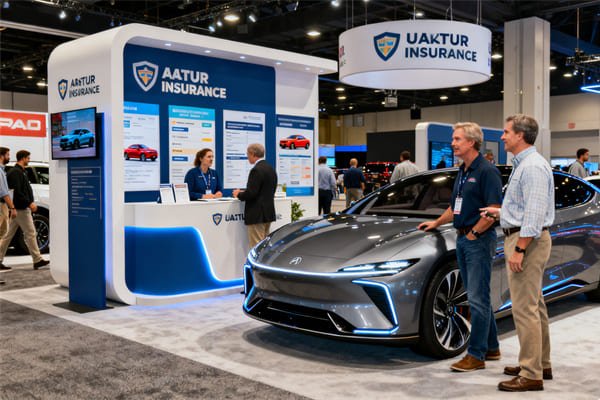One of the most common misconceptions I encounter is clients believing comprehensive coverage automatically includes collision protection.
No, comprehensive car insurance does not include collision coverage. They are separate coverages that protect against different types of damage – comprehensive covers non-collision incidents while collision covers accidents involving other vehicles or objects.

Let me clarify the distinct differences between these essential coverages based on my years of experience.
What Is Not Covered By Comprehensive?
I often see clients surprised when their comprehensive coverage doesn’t protect them in certain situations.
Comprehensive insurance does not cover damage from collisions with other vehicles or objects, mechanical failures, wear and tear, or intentional damage. It also excludes medical expenses and liability claims.

Let’s examine the key exclusions in detail:
Comprehensive Coverage Limitations
-
Common Exclusions
- Vehicle collisions
- Single-car accidents
- Mechanical breakdowns
- Regular maintenance
- Tire wear
- Interior damage
- Custom modifications
- Racing activities
-
Additional Exclusions
- Business use
- Rental car coverage
- Personal items
- Aftermarket parts
- Vehicle depreciation
- Driver injuries
- Passenger injuries
- Legal defense costs
Exclusion Categories
| Type | Example | Alternative Coverage |
|---|---|---|
| Collision | Car accidents | Collision insurance |
| Mechanical | Engine failure | Extended warranty |
| Personal | Stolen items | Homeowners insurance |
What Does Comprehensive Car Insurance Cover?
Through handling countless claims, I’ve seen comprehensive coverage protect vehicles from various unexpected events.
Comprehensive insurance covers damage from theft, vandalism, natural disasters, falling objects, animal collisions, fire, and glass breakage. It’s essentially protection against events beyond your control.

Let’s break down the coverage components:
Comprehensive Protection Areas
-
Natural Events
- Floods
- Hail damage
- Wind damage
- Lightning strikes
- Falling trees
- Earthquakes
- Fire damage
- Storm debris
-
Human/Animal Factors
- Vehicle theft
- Vandalism
- Glass breakage
- Animal collisions
- Civil disturbance
- Flying objects
- Malicious damage
- Riot damage
Coverage Analysis
| Event Type | Coverage Level | Frequency |
|---|---|---|
| Natural | Full value | Common |
| Criminal | Full value | Moderate |
| Accidental | Full value | Frequent |
Is Full Coverage Both Comprehensive And Collision?
I spend considerable time explaining the concept of "full coverage" to my clients.
Yes, full coverage typically includes both comprehensive and collision insurance, along with state-required liability coverage. However, "full coverage" isn’t a standardized term and may vary by insurer.

Let’s explore what constitutes full coverage:
Full Coverage Components
-
Required Elements
- Liability coverage
- Comprehensive coverage
- Collision coverage
- Personal injury protection
- Uninsured motorist
- Medical payments
- Rental reimbursement
- Towing coverage
-
Optional Additions
- Gap insurance
- New car replacement
- Diminishing deductible
- Accident forgiveness
- Custom equipment
- Extended transportation
- Repair guarantee
- OEM parts coverage
Coverage Comparison
| Component | Protection Level | Cost Impact |
|---|---|---|
| Liability | Basic | Moderate |
| Comprehensive | Enhanced | Medium |
| Collision | Complete | High |
What Does Comprehensive Insurance Cover Me For?
Based on my claims handling experience, I’ve seen comprehensive insurance protect vehicles in surprising ways.
Comprehensive insurance covers your vehicle against theft, weather damage, vandalism, animal impacts, falling objects, fire, floods, and glass damage. It’s your protection against unexpected non-collision incidents.

Let’s examine specific coverage scenarios:
Comprehensive Claim Types
-
Environmental Claims
- Hailstorm damage
- Tree impact
- Flood damage
- Hurricane effects
- Lightning strikes
- Tornado damage
- Snow/ice damage
- Wildfire damage
-
Other Incidents
- Vehicle theft
- Break-in damage
- Graffiti
- Rock impacts
- Animal collisions
- Glass cracks
- Paint damage
- Parking lot vandalism[^1]
Claim Frequency Analysis
| Claim Type | Occurrence | Average Cost |
|---|---|---|
| Weather | Seasonal | Medium-High |
| Theft | Year-round | High |
| Vandalism | Random | Low-Medium |
Conclusion
While comprehensive insurance provides valuable protection against many risks, it’s crucial to understand it doesn’t include collision coverage[^2]. For complete vehicle protection, you need both comprehensive and collision coverage.
---
[^1]: Explore how car insurance policies cover vandalism to ensure you're protected against malicious damage.
[^2]: Learn about collision coverage to ensure you have the right protection for accidents involving your vehicle.


